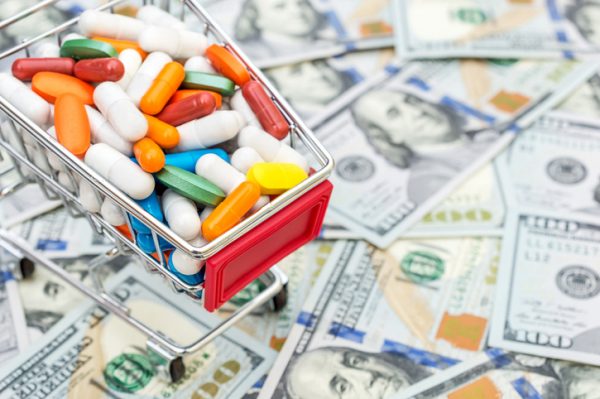
As with any perishable item, short-dated drugs are more prone to the risk of destruction if they are not managed appropriately. These medications should be approached differently to help ensure that the product is used for its original intended purpose – to treat patients. Whether stock is aging on the shelf, a short-dated discount becomes available, or there is limited supply in the market, pharmacy teams are often faced with having to procure & manage short-dated inventory. How effectively and proficiently this is done can be the difference between dollars saved or dollars lost within the hospital pharmacy’s budget.
With the proper procedures in place, pharmacy teams can drive down their drug spend by sourcing manufacturer surplus, improving medication access for the healthcare facility, and helping to reduce the risk of drug destruction by making the right decisions with short-dated product internally. Here the 7 best practices to follow:

Health Benefit Consultants, Share Your Expert Insights in Our Survey
Blake Powers Blake Powers is the Chief Operating Officer of MedShorts, a virtual marketplace for pharmaceutical products in surplus and shortage. He is one of the original founders of the company, established in 2015, and works closely with partnered manufacturers, GPO’s, and key accounts. Traveling, reading, hiking, and fishing are a few of his favorite […]
- Don’t buy more than you need – Look at your Average Monthly Utilization (AMU) of the drug and calculate how many months are left on the drug’s lot. Then subtract any system dating thresholds to determine the appropriate quantity to purchase. For example, if a lot has 5 months to expiration, your AMU is 75 packs, and your hospital has a policy of removing product from the floor that has 60 days to expiry or less, you’ll only want to purchase up to 3 months’ worth of the drug. In this situation, up to 225 packs.
- Check inventory on hand – After you figure out your average usage rate, confirm in your inventory management system (or put eyes on the shelves) how much stock you have on hand today. What’s the expiration date? Using the example above, if you have 25 packs already on hand (and it too is short-dated), you may want to trim the order quantity down to 200 packs.
- Verify any spatial limitations – All pharmacies are different: from the people, location, specialty, and size. Confirm that you have the physical space to store the product that you are evaluating. If your typical storage area is at or near capacity – consider extra shelving, modifying to a library-style shelving system, or propose an alternate (over-flow) storage area at your next pharmacy meeting.
- Calculate your true savings – Before committing to the purchase, figure out both your Wholesale Acquisition Cost (WAC) and your Actual Acquisition Cost (AAC) savings to help with pharmacy cost-containment initiatives. Remember to keep track of your drug savings analytics each month! Depending on the dating, short-dated discounts can range from 20-60% off what you’d typically pay.
- Color-code – Once your short-dated product arrives from the supplier, label the outside of the drug’s packaging with a color (i.e. a green sticker) to indicate that the product has limited dating and should be placed in front of any other full-dated items on the shelf.
- Transition from FIFO (First In, First Out) to LIFO (Last In, First Out) inventory management practice when stocking short-dated pharmaceuticals. Some pharmacy teams have adopted to a FEFO (First Expired, First Out) policy that examines each lot’s date so that the product closer to expiry is used first.
- Incentivize good practices – Pharmacy technicians who manage short-dated inventory effectively can be the difference between saving or losing significant dollars within the department. Rewarding the pharmacy staff starts with acknowledging the cost-savings achieved (and waste avoided) with proficient inventory management. Healthcare systems should consider incentives both monetary (as part of the employee’s performance evaluation) and non-monetary (with additional vacation time or a special lunch).
Coming off the manufacturer’s production line, the average shelf life of a drug is between 24-36 months. Especially with multi-source generic medications where product availability/pricing ebbs and flows depending on drug companies entering or leaving the market, it is inevitable that you have to address short-dated inventory. However, proactive pharmacy teams will have the advantage. If pharmacists and technicians are properly trained at navigating the idiosyncrasies of managing medication with limited shelf-life, you’ll be in a better position to save on your pharmacy spend whenever manufacturer discounts become available, stock up on short-dated supply (and pivot to FIFO or FEFO) whenever there are market shortages or limited allocations, and ultimately play a role, however small it may be, at a reducing unnecessary waste in the pharmaceutical supply chain.
Photo: Ligorko, Getty Images

A Deep-dive Into Specialty Pharma
A specialty drug is a class of prescription medications used to treat complex, chronic or rare medical conditions. Although this classification was originally intended to define the treatment of rare, also termed “orphan” diseases, affecting fewer than 200,000 people in the US, more recently, specialty drugs have emerged as the cornerstone of treatment for chronic and complex diseases such as cancer, autoimmune conditions, diabetes, hepatitis C, and HIV/AIDS.
Blake Powers is the Chief Operating Officer of MedShorts, a virtual marketplace for pharmaceutical products in surplus and shortage. He is one of the original founders of the company, established in 2015, and works closely with partnered manufacturers, GPO’s, and key accounts. Traveling, reading, hiking, and fishing are a few of his favorite hobbies. Blake holds two degrees from Florida State University in Entrepreneurship & Finance, and an M.B.A. from Rollins College, Crummer Graduate School of Business.











